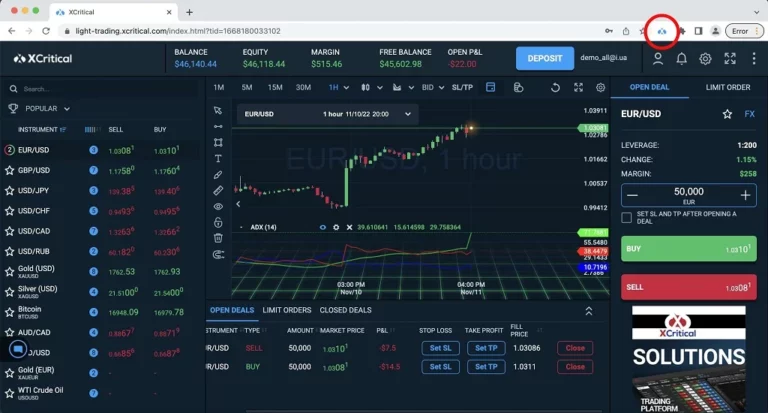Content
One of the benefits of CRM is it becomes easier and natural for businesses to improve their relationships with existing and potential customers. The fact of the matter is that customer retention and loyalty have become integral to drive growth in a competitive business landscape. Companies also use CRM for strategic management, which allows businesses to understand their interactions and engagements with customers. CRM https://www.xcritical.com/ marketing automation software should be tailored to suit the specific needs and models of each individual business. The goal of CRM marketing is to improve and optimize customer relationships, in order to drive customer loyalty, retention, revenue and customer lifetime value. Helping your team members feel empowered and productive is essential to fostering a quality team that can reach your business goals.
Using customer data to inform marketing campaigns
Here we look at some of the best CRM strategy examples that can help your business meet your goals. Although you might be feeling overwhelmed with all these steps, keep in mind that developing a CRM strategy will benefit your business enormously. Use CRM dashboards to analyze what went well and what didn’t, identify opportunities for improvement, and Initial exchange offering experiment with new techniques. This will help you learn from mistakes, optimize processes, improve customer experiences, and refine your CRM strategy. Another benefit of automation is that you can set up email templates correctly formatted with your tone of voice and personalized with the correct contact name to save time and boost sales.
Microsoft Dynamic 365, a Cloud-based CRM and ERP Bombining 200 Apps
It also allows you to store a wide range of data about current clients, as well as those still being courted. Do a bit of digging and you may find a company in a similar industry, but perhaps a different market, you can emulate. Or, you may find an entirely different business out there whose strategy can be tailored to fit your needs. Remember, there is no cookie-cutter CRM strategy that will work for every business. However, there is a define crm strategy world of CRM strategy examples out there you can learn from and be inspired by.
Why is Optimove the #1 Company for CRM Marketing?
This allows you to dedicate the necessary resources and streamline the process. By doing so, you can strengthen these relationships and ensure their continued growth. To boost the success of your CRM efforts, identify and nurture your most valuable customers. These are clients who contribute significantly to your revenue and have the potential for long-term partnerships. By sending timely and relevant information to leads, you enhance the chances of converting them into loyal customers. You also get CRM templates to help you get started and built-in project management functionality to keep your team organized.
Plan how to provide a 360° customer experience

Simplify the process with the ClickUp Large Account Management Process Template. Customer Relationship Management (CRM) software centralizes all your exchanges with prospects and customers. Customer loyalty is an under-exploited growth lever that costs 5 times less than acquisition. Depending on the size of your organization and the type of business you run, you’ll need different CRM software features.
In the long run, unethically collecting and storing consumer data is bound to have a negative impact on businesses. Still, when it comes to customer participation, there are bound to be some unethical loops. The objective of businesses using CRM solutions should be to maintain sensitive data with the consent of users and ensure compliance. On the bright side, more advanced CRM systems take into account data privacy and confidentiality more seriously. Not to mention, more businesses have started to feel obligated to collect and store CRM information responsibly and BPO companies are using CRM software in call centers with success as well. How you handle customers from sales to service and even in marketing endeavors will define your business longevity and success.
A CRM system, or CRM software, is designed to manage a company’s relationships and interactions with both existing and potential customers. It centralizes customer information, automates marketing efforts, and facilitates communication. CRM platforms integrate various functions, such as sales and marketing, to provide a unified view of customer data for more personalized and efficient customer marketing. The goal of customer relationship management is to improve customer experiences, support customer retention, and ultimately drive business growth. For example, a CRM retention strategy focuses on keeping existing customers engaged and active through marketing campaigns according to customers’ lifecycles and segmentation.

You could then use that information to create targeted, value-driven messaging for each distinct population, and increase the overall chances of engagement. Operational CRM systems are designed to automate and streamline business processes to acquire new customers and improve customer retention. Once data is collected, it can be analyzed to segment your team’s processes and workflows.
With a strategy and CRM tool that works for your organization, the sky’s the limit for automating and integrating customer data. Ideating workflows is the process of improving your systems through actions like identifying bottlenecks and removing unnecessary tasks. It combines data analysis, workflow automation, and more to help your business processes work at peak efficiency. AI can help you streamline this by sounding the alarm for process inefficiencies so you can identify them quickly and change course appropriately.
Every moment your salesforce spends on administrative tasks is time away from prospects. With automated tasks like call and activity reporting, your salespeople can spend more time doing what they do best. When you first start out in business, you can probably manage to keep all of your customers top-of-mind because you don’t have that many, so sticky notes are your best friend. Consider CRM strategy as a customer-driven version of a sales pipeline or sales funnel. Breaking that pipeline down into precise components allows you to address opportunities or smooth out rough patches on your way to conversion. Ultimately, the nature of your offerings and the buying experience will inform the scope of your CRM strategy and how quickly you can implement the insights it generates.
- Consider CRM strategy as a customer-driven version of a sales pipeline or sales funnel.
- This will allow you to choose the tools, capabilities, and price point that’s best for your business.
- This may sound counter-intuitive to what you’re trying to achieve, but it’s hugely important.
- A CRM marketing strategy’s most important goal is to get to know your customers and their needs.
- All the juicy information you need to create that content is right there in your CRM.
- A CRM strategy centres around how you’ll acquire, sell to, re-engage, and retain your customers.
- Furthermore, Pipedrive has a friendly sales community to share experiences and get advice from other users.
SAP is a CRM with customizable tools that support different strategies across a company, from sales and service to marketing and analytics. This approach allows businesses to understand what makes their target audience tick and then strategically develops a product that can fulfill the needs of customers. CRM marketing automation describes a set of processes executed by software to automatically respond to customer activities and improve the overall customer relationship with brands.
This last point is the most critical — process familiarity plays a large role in determining which tools are used and how. By giving staff time to understand the new solution, you can set yourself up for strategic success. Customer relationship management is just that…managing relationships with your customers. You’ll see a variety of benefits in your business once you incorporate a CRM. CRM strategies vary by business but typically cover customer behavior and acquisition, marketing channels, customer service, and business reporting. If you haven’t already, conduct a SWOT analysis to capture your strengths, weaknesses, opportunities, and threats as a business.
Every business should keep track of its marketing funnel, observing the buyer’s journey from user to lead to customer. But if your conversion rate is particularly low, it may be because there are holes in your funnel that you could patch up. You can see where users most commonly exit the funnel and which groups of users most commonly do so. CRMs let you track specific customer traits and behaviors to constantly refine your audience targeting, allowing for much greater personalization.
